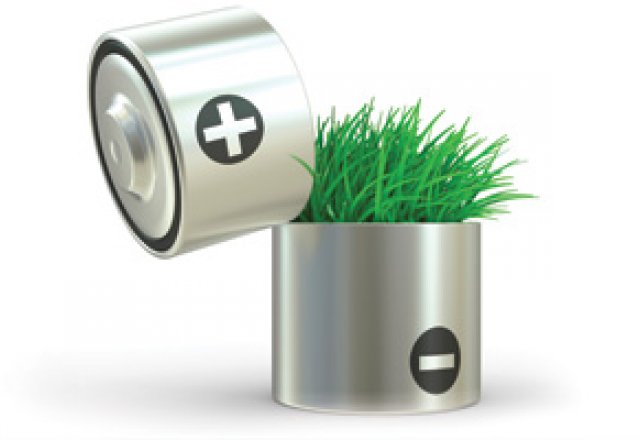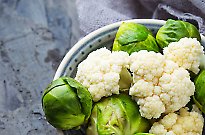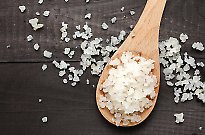
Alkalise your life

The forgotten factor in fat burning
Imagine a world where burning body fat is as easy as 1, 2, 3. Too good to be true? Perhaps, given the impact poor liver function and stress can have on our waistlines. However, there is a way of eating that can make an enormous difference to whether your body is willing to let go of a few unwanted kilos, says holistic nutritionist and author of the bestselling Accidentally Overweight, Dr Libby Weaver
So what is alkalinity and how do we achieve it? Our body is governed by pH ranges, which is a measure of how acidic or alkaline a substance is. The pH range is one-to-14 with seven being neutral. Pure water is neutral. One is the more acidic end of the spectrum while 14 is the more alkaline. Any pH above seven is considered to be alkaline. Your body works hard to keep all body fluids and tissues at their optimal pH, which is different for different tissues. When this optimal is disrupted, our health can be compromised. Thrush, for example, is in part the result of vaginal flora (bacteria) changing due to pH changes in the reproductive system. To truly treat the condition, you need to alter the pH that led to the condition rather than simply treat the symptoms, otherwise the condition returns.
The pH of your blood is tightly regulated by complex systems called buffers that are continuously at work to maintain a range of 7.35 to 7.45, which is slightly more alkaline than pure water.
If the pH of your blood falls below 7.35, the result is a condition called acidosis, a state that leads to central nervous system depression. Severe acidosis where blood pH falls below 7.00 can lead to a coma and even death.
If the pH of your blood rises above 7.45, the result is alkalosis. Severe alkalosis can also lead to death, but through a different mechanism - alkalosis causes all of the nerves in your body to become hypersensitive and over-excitable, often resulting in muscle spasms, nervousness, and convulsions; it's usually the convulsions that cause death in severe cases.
The bottom line is that if you're out and about, your body is doing an adequate job of keeping your blood (plasma) pH somewhere between 7.35 to 7.45 and this allows your cells to function properly. Your body regulates the acid-alkaline balance of its fluids on a moment-to-moment basis. However, the foods you eat influence deviations within this range.
HEALTHY CELLS
Your cells require your blood to maintain a pH in this range to stay healthy for numerous reasons. The most important reason is that all of the proteins that work in your body have to maintain a specific geometric shape to function, and the three-dimensional shapes of the proteins in your body are affected by the tiniest changes in the pH of your body fluids. The body is amazing isn’t it?
When you ingest foods and liquids, the end products of digestion and assimilation of nutrients result in an acid or alkaline-forming effect the end products are sometimes called acid ash or alkaline ash.
Also, as your cells produce energy on a continual basis, a number of different acids are formed and released into your body fluids. Lactic acid is one of these acids. These acids generated by your everyday metabolic activities are unavoidable, so as long as your body has to generate energy to survive, it will produce a continuous supply of acids.
There are two main forces at work on a daily basis that can disrupt the pH of your body fluids. These forces are the acid or alkaline-forming effects of foods and liquids that you ingest, and the acids that you generate through regular metabolic activities. Fortunately, your body has three major mechanisms at work at all times to prevent these forces from shifting the pH of your blood outside of the 7.35 to 7.45 range.
These mechanisms are: Buffer Systems
- Carbonic acid-bicarbonate buffer system
- Protein buffer system
- Phosphate buffer system
- Exhalation of carbon dioxide
- Elimination of hydrogen ions via kidneys
I simply want to point out that these systems are in place to prevent dietary, metabolic and other factors from pushing the pH of your blood outside of the 7.35 to 7.45 range. But what about the subtle shifts within this range?
When people encourage you to ‘alkalise your blood’, most of them mean that you need to eat plenty of foods that have an alkaline-forming effect on your system. The reason for making this suggestion is that the vast majority of highly processed foods like white flour products and white sugar have an acid-forming effect on your system, and if you spend years eating a poor diet that is mainly acid-forming, you will overwork some of the buffering systems mentioned to a point where you could create undesirable changes in your health.
For example, your phosphate buffer system uses phosphate ions in your body to neutralize the effect of strong acids. About 85 per cent of the phosphate ions that are used in your phosphate buffer system come from calcium phosphate salts, which are structural components of your bones and teeth. If your body fluids are regularly exposed to large quantities of acid-forming foods and liquids, your body will draw upon its calcium phosphate reserves to supply your phosphate buffer system to neutralise the acid-forming effects of your diet. Over time, this may lead to structural weakness in your bones and teeth. This is one mechanism through which a poor diet can lead to osteoporosis.
Drawing on your calcium phosphate reserves regularly can also increase the amount of calcium that is eliminated in urine, which is why a predominantly acid-forming diet can increase your risk of developing calcium-rich kidney stones.
This is just one example of how your buffering systems can be overtaxed to a point where you experience negative health consequences. Since your buffering systems have to work all the time anyway to neutralise the acids that are formed from everyday metabolic activities, it's in your best interest to follow a diet that doesn't create unnecessary work for your buffering systems.
ALKALISING FOODS
Generally speaking, most vegetables and lemons have an alkaline-forming effect on your body fluids, while most grains, animal foods, coffee, alcohol, and highly processed foods have an acid-forming effect on your body fluids.
Your health is best served by a nutrient-dense diet based mostly on plant foods, with some more concentrated, more acid-forming foods added to that. For optimal health you want to eat more alkaline-forming foods than acid-forming foods to have the net acid and alkaline-forming effects of your diet match the slightly alkaline pH of your blood. The 80:20 ratio (alkaline: acid) is ideal.
If you are eating mainly grains, flour products, and animal foods, and washing these foods down with coffee or soft drink, you will significantly improve your health by replacing some (or many!) of your food and beverage choices with vegetables…with real food! When it comes to food, nature gets it right. It is human intervention that can get it wrong.
Make vegetables, including plenty of greens the centerpieces of your diet, and add to that small amounts of any other nutrient-dense foods that your appetite calls for, and that experience shows your body can digest well.
To increase the vegie content of your diet, try juicing a big bunch of green leafies for your breakfast. Try spinach, silverbeet, celery, parsley, carrot and lemon. If initially this is too tart for your tastebuds, add the juice of half an apple or some pineapple and gradually add less of the fruit each day as you get used to the taste of the greens. After a while, your energy levels will soar! Choose salad or eat leftovers (containing some greens of course!) for lunch five days out of seven. Many of us rely too much on bread at lunchtime, at the expense of our greens. Dinner might be your opportunity to steam, blanch or stir-fry some vegetables or to include a big bowl of salad, keeping in mind any leftovers will be handy for lunch the next day.
I can’t encourage you enough to increase your consumption of green foods, but if you’re giggling at the thought of having enough time to make a vegetable juice in the morning, then try one of the many green drinks available, such as barley grass, wheat grass and spirulina. You can buy these as powders or capsules and they can be a great addition to your diet.
It is a complex concept, but all you need to keep in mind is that alkalinity promotes body fat loss, energy and vitality, and assists with disease prevention. To achieve this state, base your diet on green foods. Investing in alkalinity means some of our other acid-promoting ways have much less impact on our health. So perhaps burning body fat is as easy as ABC rather than 1, 2, 3! And of course A stands for alkaline!
To learn more about alkalinity visit www.drlibby.com. Dr Libby’s book Accidentally Overweight goes into detail about this concept. Her new book Rushing Woman's Syndrome is out now.
Browse more health advice and don't forget to stock up on healthy recipes!


